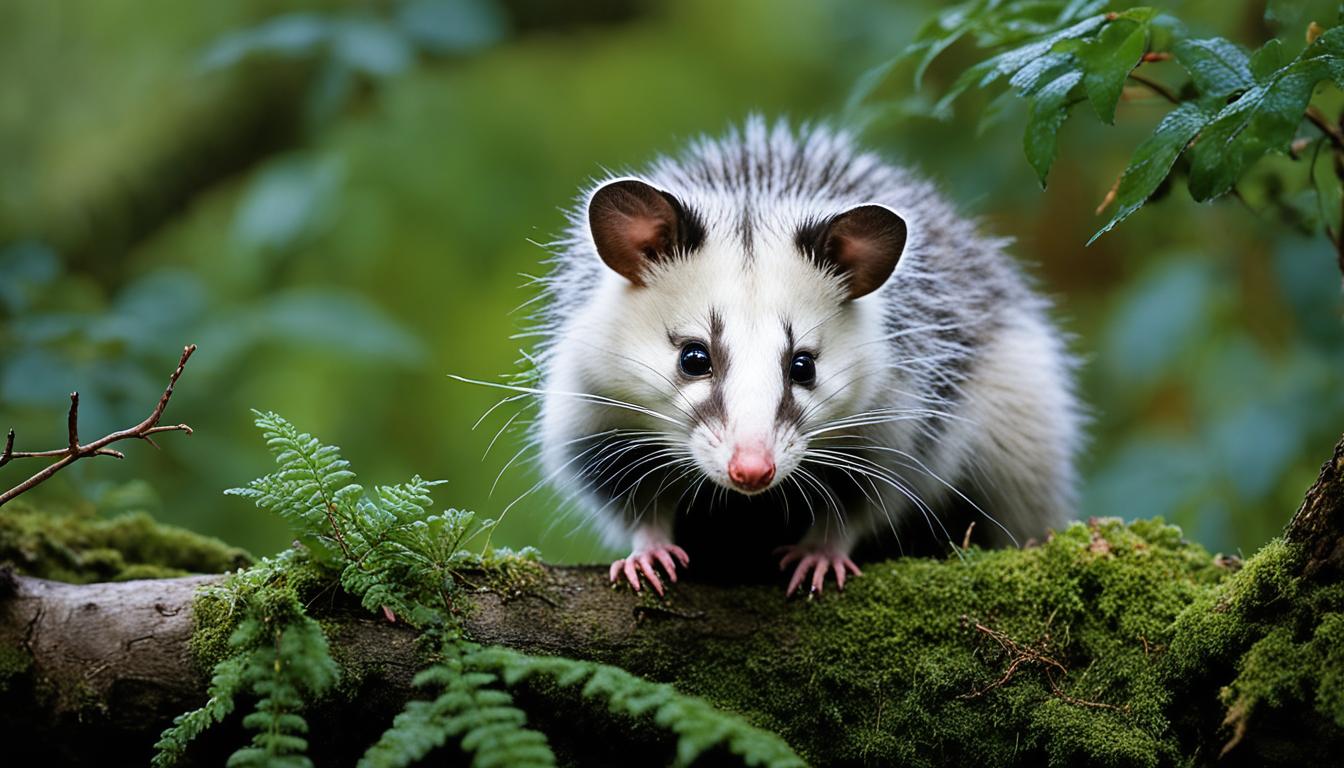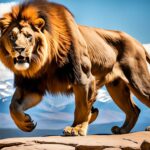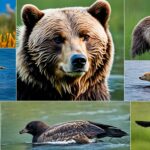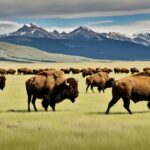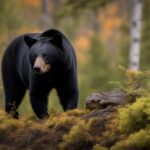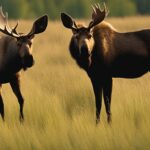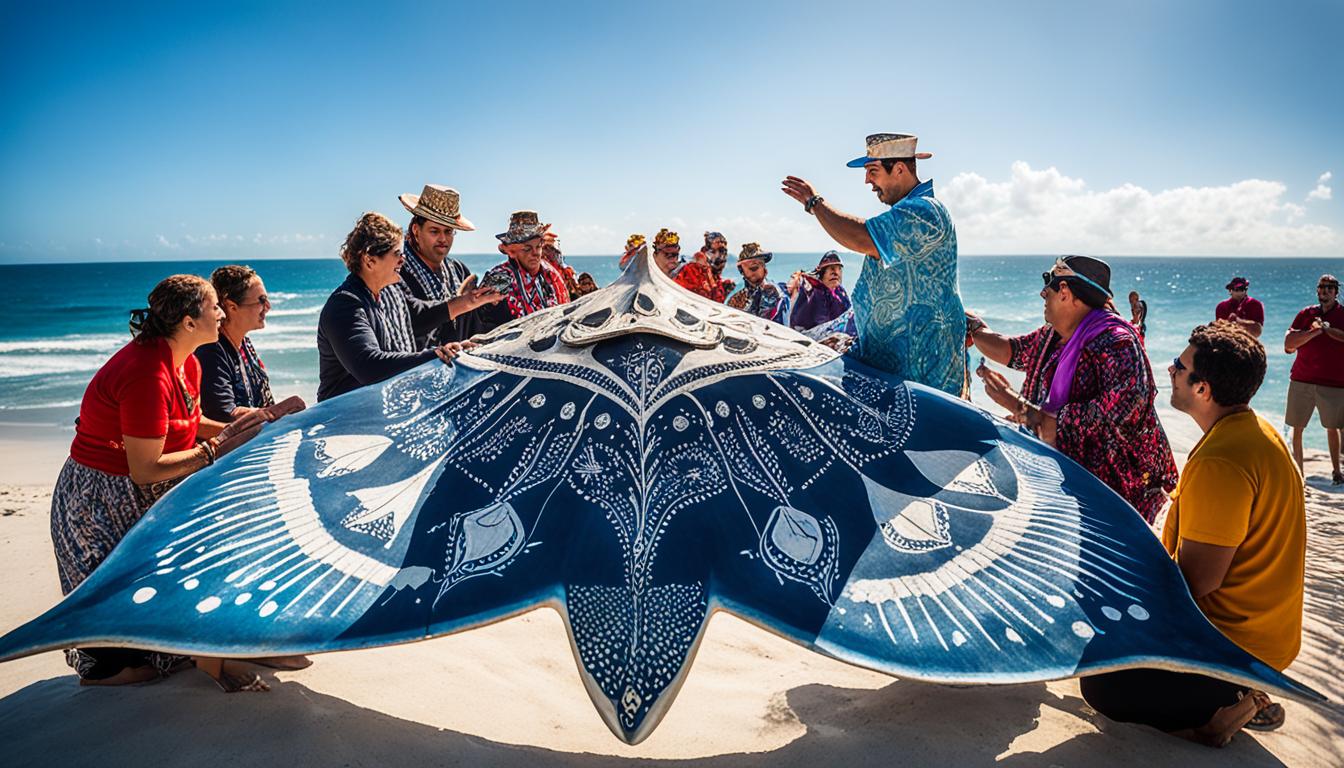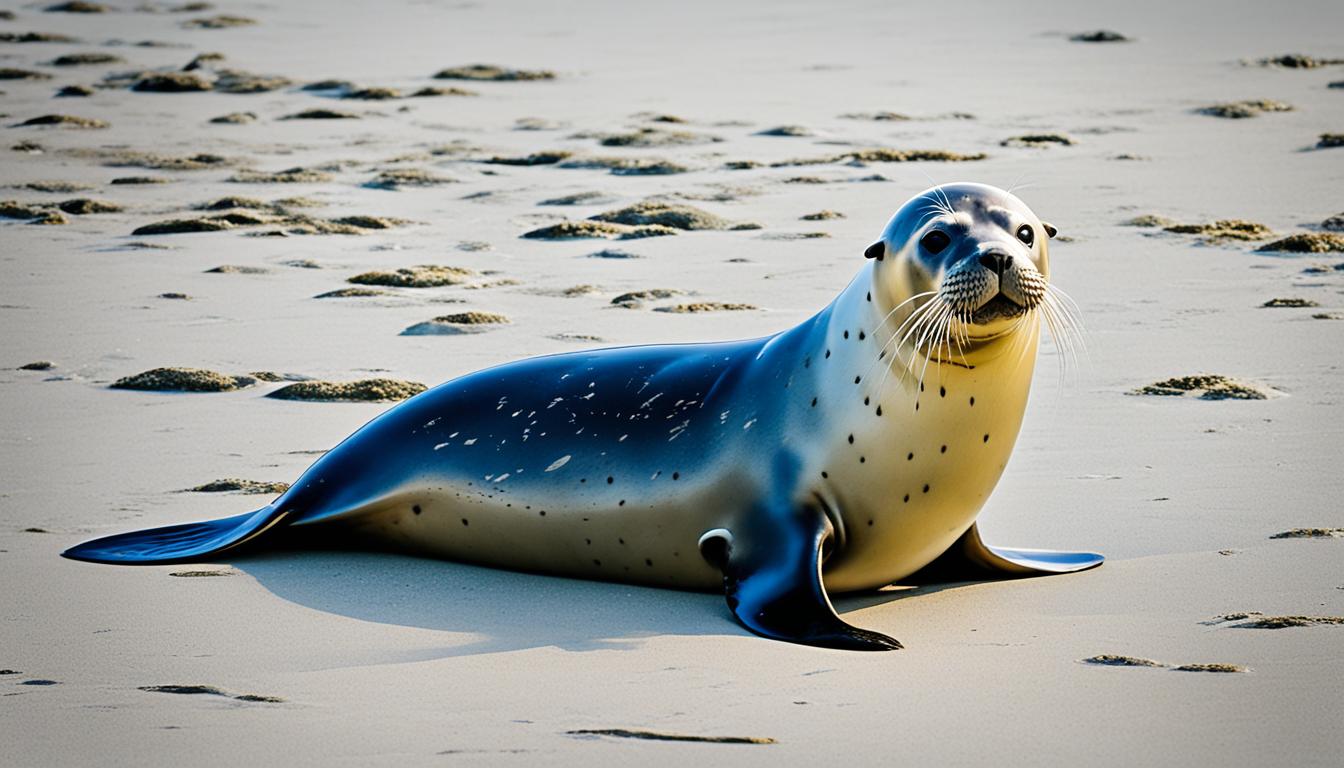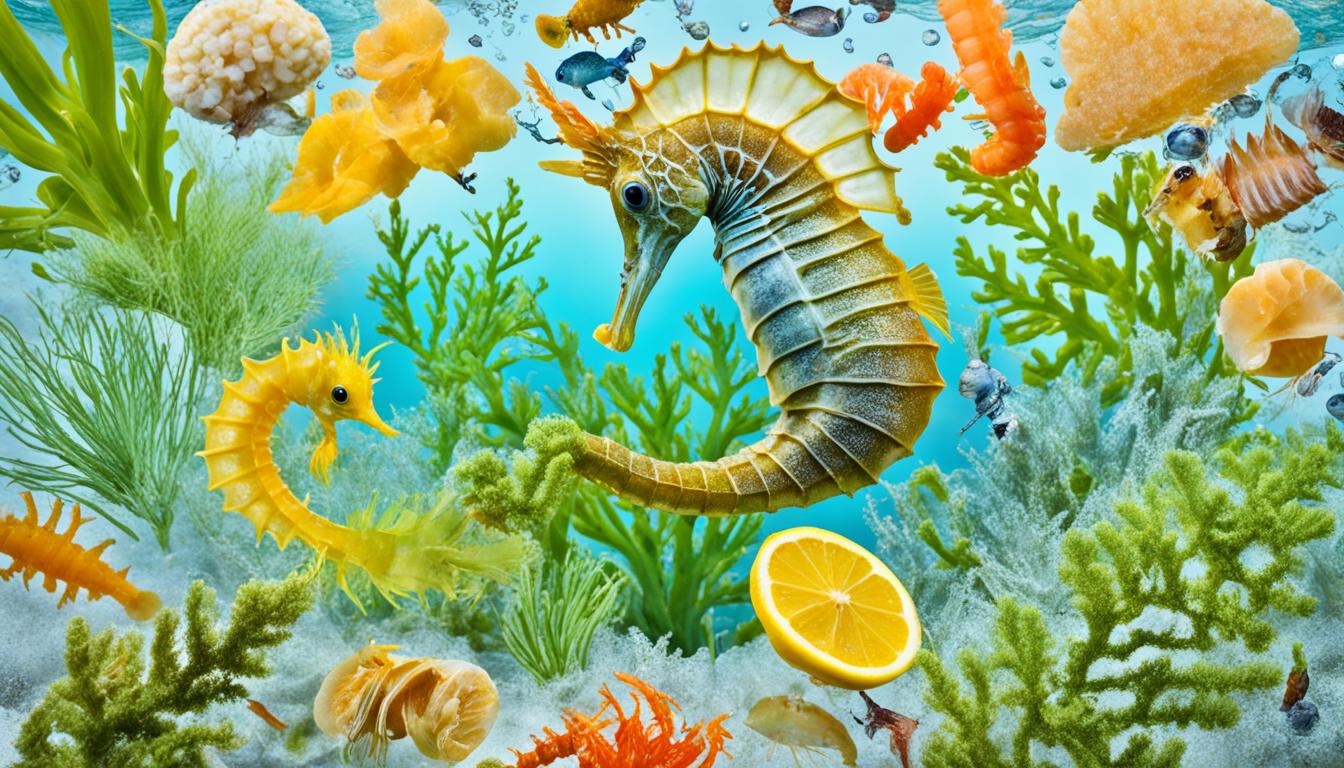The Virginia opossum, also known as Didelphis virginianus, is a tough marsupial. Its history goes back 70 million years. They are native to the eastern United States and parts of southeastern Canada. These animals have made homes in many places. They look for places with lots of food, water, and spots to hide. They especially like woodlands near water, such as streams, ponds, lakes, and swamps. But, they can also live in farmlands, small forests, or even cities and towns.
Opossums can live in many different kinds of places. This shows how well they adapt to their environments. Their skill at making do in different places is why they can survive in various habitats.
Introduction to Opossum Habitat Preferences
Opossums are really good at making any place their home. They look for spots with food, water, and shelter. This makes them successful in finding homes in both the city and the wild.
These animals can live in woods, wetlands, or your backyard. They love places with lots of plants and near water. Finding safe places and enough food is what they’re after. Opossums living near people show how well they can adjust.
Although they usually live in green spaces, opossums have also learned to live in cities. They do this by using what humans offer, like food and safe places. Knowing what opossums need helps us see how they’ve adapted to many places.
Their knack for living in different places truly stands out. This tells us a lot about their smart ways of thriving. Whether it’s the deep woods or close to humans, opossums can make it work.
Natural Habitats of Opossums
The Virginia opossum, known scientifically as Didelphis virginianus, lives in various natural areas. These strong marsupials like forested and brushy places near water. They find plenty of food there, like insects, fruits, and small animals.
Opossums are from the southeastern U.S. and Central America. They’ve spread to different climates in the eastern U.S. and southeastern Canada. This shows they can live in many places, which helps them survive.
| Habitat Type | Characteristics | Food Sources |
|---|---|---|
| Forested Areas | Dense vegetation, shelter options | Insects, fruits, small mammals |
| Brushy Areas | Thickets, protective cover | Berries, insects, amphibians |
| Water Sources | Streams, ponds, swamps, marshes | Fish, amphibians, aquatic plants |
Learning about the opossum natural habitats helps us respect their place in nature. Opossums can make use of new environments when human and nature’s spaces meet. This skill shows how they can survive in changing conditions.
Woodland Environments
Opossums love living in the woods because they find plenty to eat and places to hide. They are especially happy near water in places like swamps, marshes, and alongside streams.
Streamside Woodlands
Living by streams brings opossums lots of tasty bugs and different plants. They have everything they need nearby – food, green hideaways, and water for the land.
Swamps and Marshes
Opossums also enjoy swamps and marshes because there’s so much food and shelters there. They like to eat things like frogs, small birds, and dead animals, fitting their go-with-the-flow eating style.
Urban and Suburban Areas
Opossums are adapting to city life, showing their clever nature. They are making urban and suburban places their new homes. This shows how they can find ways to live in different places.
In the city, opossums find many places to sleep and hide. They live under sheds or in attics. These spots keep them safe. They also find lots of food like leftovers, pet food, and fruits. This makes the suburbs a good home for them.
Living in the city is not easy for opossums. They can get hurt by cars and sometimes have trouble with people. But, they have learned to live with us in peace.
Opossums do well in towns and suburbs because they have many places to hide and food to eat. Learning about them teaches us how animals can live with us, even in busy places.
Opossum Habitat Characteristics
Opossums need certain things to live well. They must have food, water, shelter, and a good place to make babies. This explains why they can live in many different places.
Essential Requirements
Opossums need food and water that they can find easily. Places they live in, like forests or cities, have to have these. They also need safe shelters to protect themselves from danger and bad weather.
Adaptability and Range Expansion
Opossums move about a lot and can live in many places. For example, from the southeast up to the north in Canada. They are very good at changing to fit new environments and finding and using different kinds of food and shelters.
Nesting Habits of Opossums
Opossums show amazing resourcefulness in their nesting habits. They don’t make their own dens. Instead, they find and use places already out there. This way, they save energy and time. They use their saved time to find food and reproduce.
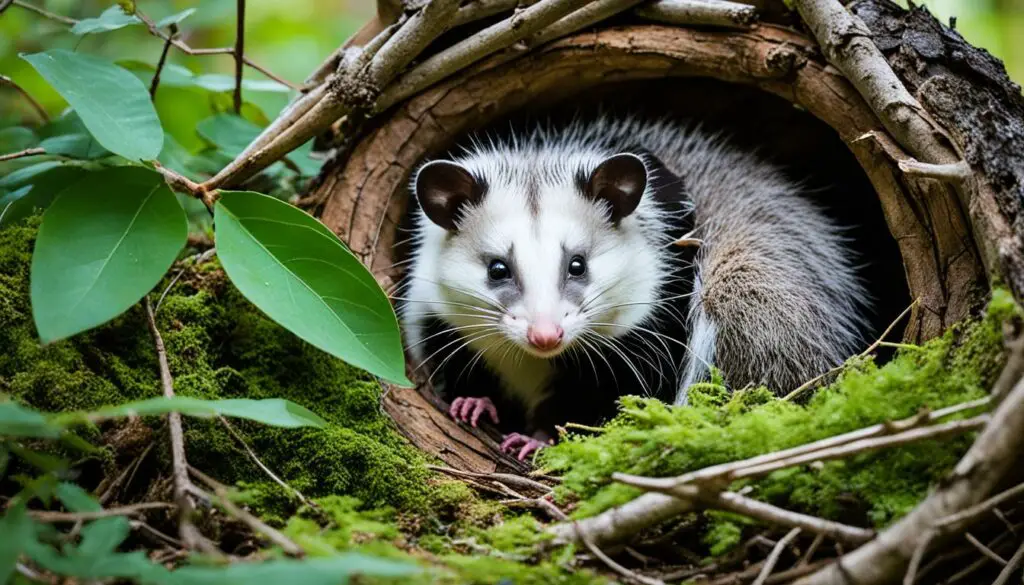
Den Sites
Opossums pick their den sites carefully for survival. They might choose abandoned burrows, hollow trees, or even some human-made spots. These places keep them and their young safe from enemies and bad weather.
Use of Existing Shelters
Opossums are smart about using already-built shelters. When they find a place, they make it comfy. They line it with dry leaves and grass. This keeps them warm and hidden from dangers. It shows how they’re able to use what’s around them to live well.
Impact of Seasons on Opossum Habitats
Seasonal changes are key in how opossums live, affecting where they make their homes. Opossums deal with different climate changes in various regions. This leads them to adjust how they survive in changing seasons.
In the north’s harsh winters, opossums face tough times like frostbite. Since they don’t hibernate, they must find warm places to live. These marsupials look for places that help them stay warm and safe.
Understanding these seasonal challenges is crucial for protecting opossums. Their habitats need to offer what they need every season. This means having food, water, and safe spaces at all times.
Let’s compare how opossum habitats weather the seasons in different places:
| Region | Winter | Summer |
|---|---|---|
| Northern U.S. | Risk of frostbite, relies on insulated shelters | Abundant food, favorable conditions |
| Southern U.S. | Milder winters, less risk of frostbite | High temperatures, potential drought |
| Urban Areas | Shelter under buildings, access to human food waste | Consistent food supply, but increased human interaction |
This table shows how opossums use various habitats to survive year-round. They need places that change with the seasons but still offer what they need. This highlights the opossum’s adaptability in different places.
Human Interaction and Habitat Modification
The way humans interact with opossums shapes how they behave and where they live. As our cities grow into the wild, opossums find ways to live among us. They use our buildings and food to survive.
They often live in places like attics and garages humans have built. This is because cities keep spreading, changing the opossums’ homes. Opossums also eat our food scraps and fruits, which keep them fed and safe from other animals.
Opossums have a smart trick for staying safe around people – they pretend to be dead. This is called “playing possum.” It helps them avoid fights with us and stay out of danger.
There are good ways for us to help opossums too. We can make sure our trash is secure, and leave space for them to move without trouble. Also, teaching others about opossums helps us all get along better. It’s about knowing that our actions affect where opossums live and finding ways to make it work for everyone.
| Human Interaction | Impact |
|---|---|
| Providing Shelter | Opossums utilize urban structures for safe nesting sites. |
| Human Refuse | Serves as a food source for opossums, aiding their survival in urban areas. |
| Behavioral Adaptation | Opossums “play possum” to avoid confrontations with humans. |
| Education and Management | Leads to improved coexistence and benefits both opossums and human communities. |
Dietary Influence on Opossum Habitat Choice
Exploring what opossums eat helps us grasp why they pick certain places to live. These animals eat a mix of things like insects and fruits. This variety in diet makes them adaptable in finding food.
Omnivorous Diet Impact
Opossums enjoy eating a bit of everything, from insects to small mammals. Their choice in food means they can live in different places like the woods or cities. This is because they can find their favorite treats in many places.
Foraging Behavior
Opossums are always on the hunt for food, checking out all kinds of areas. They search in the wild and in our cities. This skill helps them find food easily in different places, which is important for staying alive.
| Food Type | Common Sources | Impact on Habitat Choice |
|---|---|---|
| Insects | Woodlands, Urban Gardens | Promotes adaptation to both natural and urban areas |
| Fruits | Orchards, Wild Bushes | Encourages residence near abundant fruit sources |
| Small Mammals | Suburban Yards, Forested Areas | Supports flexible habitat selection |
| Carrion | Roadkill, Remains in Wilderness | Facilitates survival in diverse settings |
Role of Opossums in Urban Ecology
In cities, opossums are key to keeping the ecosystem in check. They are not always noticed, but they do essential work. Opossums help by eating insects, rodents, and dead animals. This keeps pest numbers down and the environment balanced.
Opossums also play a big part in keeping things clean. They eat leftover food, helping to prevent a build-up that could attract more pests. This eating up of waste acts like natural sanitation. It makes the city healthier for everyone.
But, opossums in the city sometimes worry people because of disease and dangers to pets. Knowing more about them and what they do can lower these concerns. Telling people about the good they bring and how to live peacefully with them is crucial. This way, we can include opossums in the city plan, creating a better place for all species.

